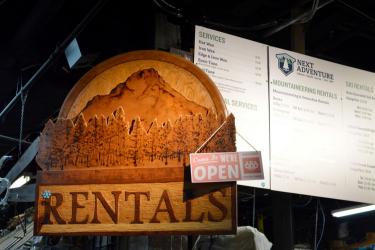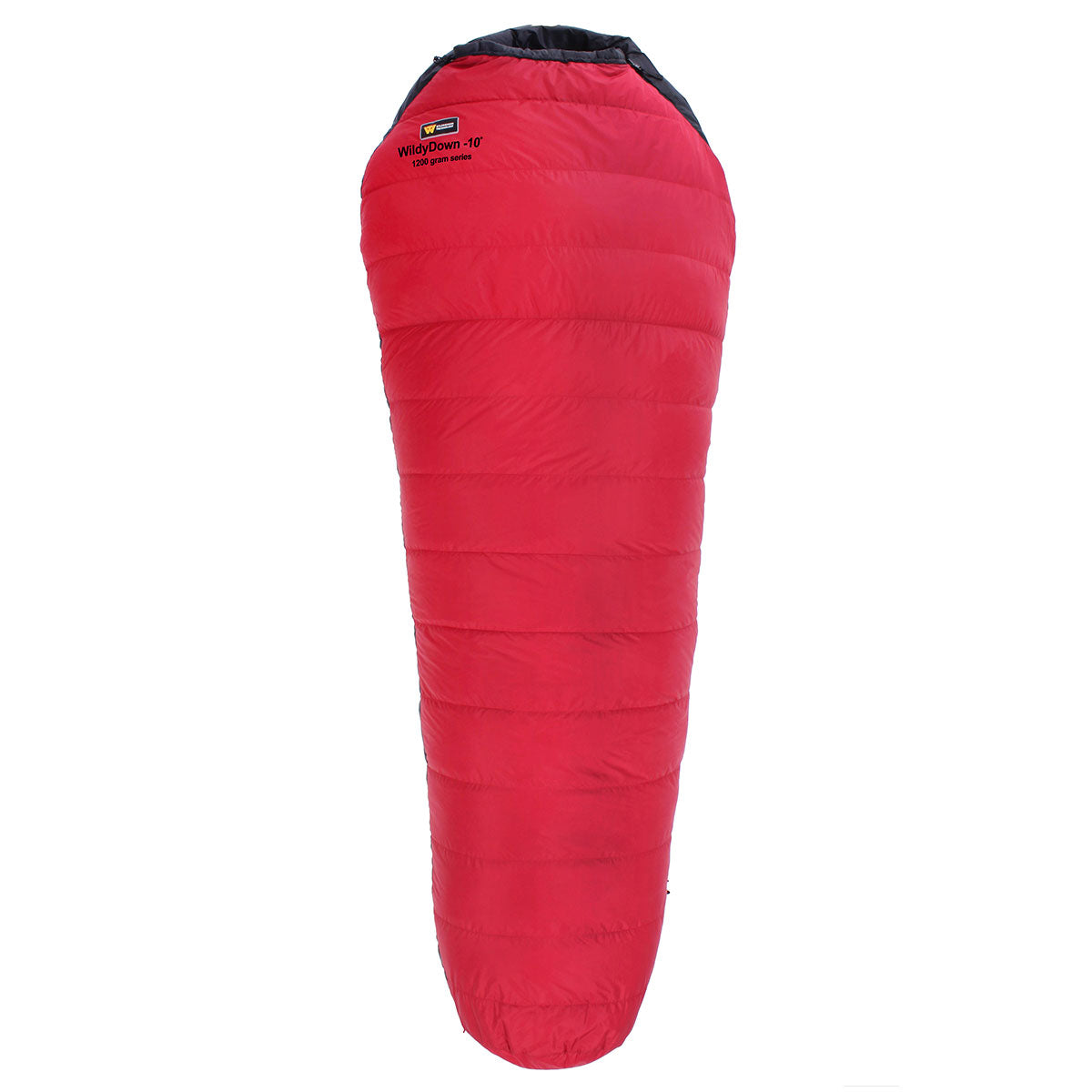
Gear Review: Wilderness Technology Wildydown -10 F Sleeping Bag
The adventures of the Wilderness Technology Wildydown -10 F sleeping bag:
Location:
Cody, WY: tiny cabin with minimal heat.
Canmore, Alberta Canada: cabin floor.
Trekking in Nepal: unheated guest houses for 16 days up to 17,000’ elevation.
The Root Canal, The Alaska Range: snow-camping on a glacier in a 2-woman tent.
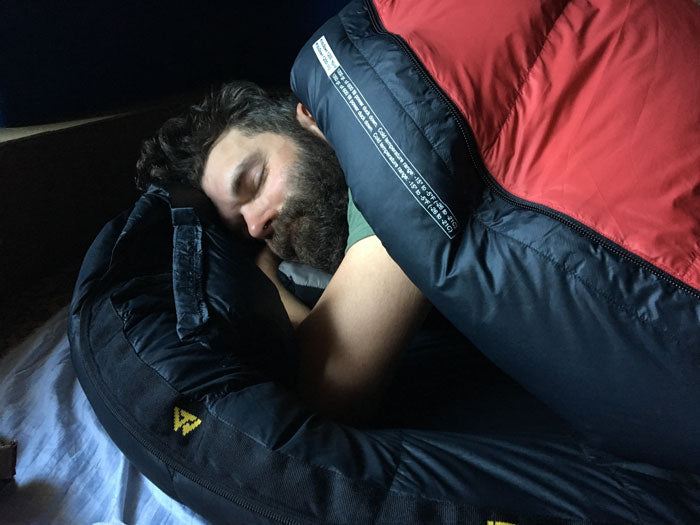 First adventure: Ice-climbing weekend in Cody, WY. I wanted to try out how the bag ‘fit’ in a cold environment without fully committing to sub-zero temps. As a 5’6” woman, I had always been told to have the bag fit snugly so it was less room to heat-up and less weight to carry. Even with the extra foot and headspace, the bag kept me plenty warm in a cabin with only minimal heat to keep the pipes from freezing. I was so thankful for the bag during those pre-dawn wake-ups!
Second adventure: Cabin floor in Canmore, Alberta; more ice-climbing. Time to zip up with someone else and see how it worked for two. Sometimes the process of getting two sleeping bags to wed is the most aggravating part. Not with these Wilderness Technology bags! With a right- and left-opening bag, the zip came together SO smoothly and all the way to the top. No wrestling with gear; the easy pull tab at the base of the zipper was also helpful for getting it aligned and started swiftly. We found that two ‘regular’-sized bags offer enough room that we could still sleep separately (and stay warm) with the top and bottom zippers zipped, but had the advantage of cuddling closer as desired. With the top zipper un-zipped, I could wrap up and stay warm when my husband said he was over-heating and had to kick-off the covers. Win.
Third Adventure: Nepal. 16-day trek from Lukla north and west to Gokyo Ri, east over Chola Pass, then to Everest Base Camp and up to 18,200’ in elevation. Springtime in Nepal brought Rhododendron and mustard green blossoms while ~10-12,000’, but it also brought snow, wind, and cold. I loved the warmth and COMFORT of the Wildydown -10F bags--even while sleeping in a t-shirt until our highest over-nights.
In warmer temps, the bags were useful as blankets, but as we gained elevation, I really appreciated the room to move and change position in my sleeping bag while it was zipped up. With no heat-- and wind often blowing through windows--stretching, changing clothes, or reading and writing all became reasonable activities in my ‘regular-sized’ bag. I may never go back to a snugly fitted sleeping bag.
Fourth and latest adventure: 2 nights on The Root Canal, a glacier that shoots off the east side of The Ruth Gorge in the great Alaska Range. My climbing partner, Katie and I climbed ‘Ham and Eggs’, an ultra-classic alpine ice route on The Moose’s Tooth in a ‘Smash and Grab’ style: flying Portland to Alaska and back in
First adventure: Ice-climbing weekend in Cody, WY. I wanted to try out how the bag ‘fit’ in a cold environment without fully committing to sub-zero temps. As a 5’6” woman, I had always been told to have the bag fit snugly so it was less room to heat-up and less weight to carry. Even with the extra foot and headspace, the bag kept me plenty warm in a cabin with only minimal heat to keep the pipes from freezing. I was so thankful for the bag during those pre-dawn wake-ups!
Second adventure: Cabin floor in Canmore, Alberta; more ice-climbing. Time to zip up with someone else and see how it worked for two. Sometimes the process of getting two sleeping bags to wed is the most aggravating part. Not with these Wilderness Technology bags! With a right- and left-opening bag, the zip came together SO smoothly and all the way to the top. No wrestling with gear; the easy pull tab at the base of the zipper was also helpful for getting it aligned and started swiftly. We found that two ‘regular’-sized bags offer enough room that we could still sleep separately (and stay warm) with the top and bottom zippers zipped, but had the advantage of cuddling closer as desired. With the top zipper un-zipped, I could wrap up and stay warm when my husband said he was over-heating and had to kick-off the covers. Win.
Third Adventure: Nepal. 16-day trek from Lukla north and west to Gokyo Ri, east over Chola Pass, then to Everest Base Camp and up to 18,200’ in elevation. Springtime in Nepal brought Rhododendron and mustard green blossoms while ~10-12,000’, but it also brought snow, wind, and cold. I loved the warmth and COMFORT of the Wildydown -10F bags--even while sleeping in a t-shirt until our highest over-nights.
In warmer temps, the bags were useful as blankets, but as we gained elevation, I really appreciated the room to move and change position in my sleeping bag while it was zipped up. With no heat-- and wind often blowing through windows--stretching, changing clothes, or reading and writing all became reasonable activities in my ‘regular-sized’ bag. I may never go back to a snugly fitted sleeping bag.
Fourth and latest adventure: 2 nights on The Root Canal, a glacier that shoots off the east side of The Ruth Gorge in the great Alaska Range. My climbing partner, Katie and I climbed ‘Ham and Eggs’, an ultra-classic alpine ice route on The Moose’s Tooth in a ‘Smash and Grab’ style: flying Portland to Alaska and back in 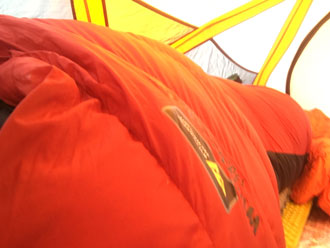 Bottom-line: I haven’t been cold in this bag in single-digit (Fahrenheit) and very likely below-zero temps. It’s a great deal for an expedition bag that’s easy to use and has a lifetime guarantee. I’d recommend it, even as a 5’6” woman at ~140 pounds.
Bottom-line: I haven’t been cold in this bag in single-digit (Fahrenheit) and very likely below-zero temps. It’s a great deal for an expedition bag that’s easy to use and has a lifetime guarantee. I’d recommend it, even as a 5’6” woman at ~140 pounds.
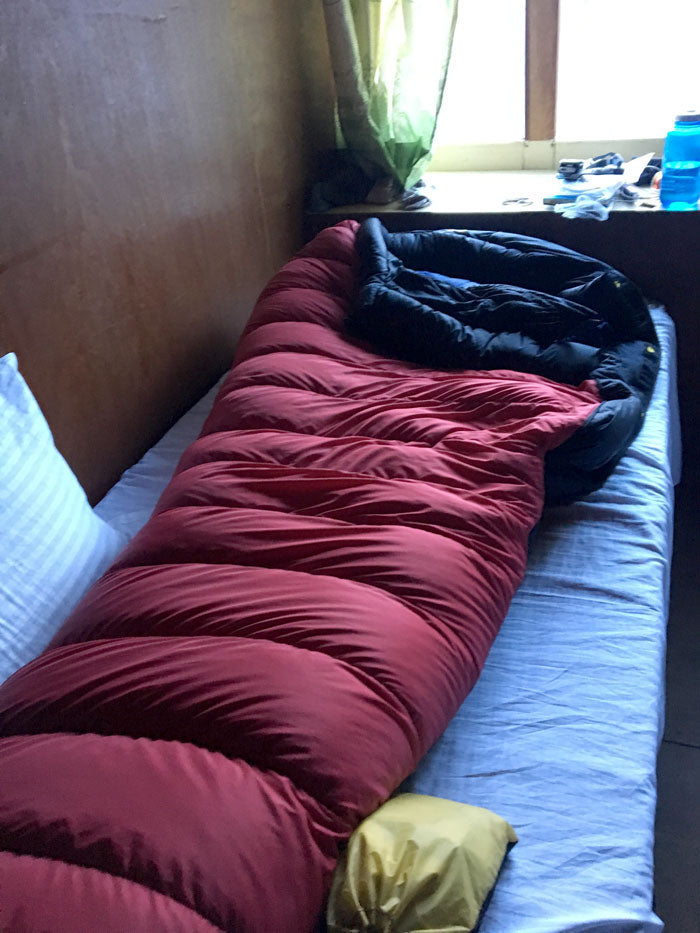
 First adventure: Ice-climbing weekend in Cody, WY. I wanted to try out how the bag ‘fit’ in a cold environment without fully committing to sub-zero temps. As a 5’6” woman, I had always been told to have the bag fit snugly so it was less room to heat-up and less weight to carry. Even with the extra foot and headspace, the bag kept me plenty warm in a cabin with only minimal heat to keep the pipes from freezing. I was so thankful for the bag during those pre-dawn wake-ups!
Second adventure: Cabin floor in Canmore, Alberta; more ice-climbing. Time to zip up with someone else and see how it worked for two. Sometimes the process of getting two sleeping bags to wed is the most aggravating part. Not with these Wilderness Technology bags! With a right- and left-opening bag, the zip came together SO smoothly and all the way to the top. No wrestling with gear; the easy pull tab at the base of the zipper was also helpful for getting it aligned and started swiftly. We found that two ‘regular’-sized bags offer enough room that we could still sleep separately (and stay warm) with the top and bottom zippers zipped, but had the advantage of cuddling closer as desired. With the top zipper un-zipped, I could wrap up and stay warm when my husband said he was over-heating and had to kick-off the covers. Win.
Third Adventure: Nepal. 16-day trek from Lukla north and west to Gokyo Ri, east over Chola Pass, then to Everest Base Camp and up to 18,200’ in elevation. Springtime in Nepal brought Rhododendron and mustard green blossoms while ~10-12,000’, but it also brought snow, wind, and cold. I loved the warmth and COMFORT of the Wildydown -10F bags--even while sleeping in a t-shirt until our highest over-nights.
In warmer temps, the bags were useful as blankets, but as we gained elevation, I really appreciated the room to move and change position in my sleeping bag while it was zipped up. With no heat-- and wind often blowing through windows--stretching, changing clothes, or reading and writing all became reasonable activities in my ‘regular-sized’ bag. I may never go back to a snugly fitted sleeping bag.
Fourth and latest adventure: 2 nights on The Root Canal, a glacier that shoots off the east side of The Ruth Gorge in the great Alaska Range. My climbing partner, Katie and I climbed ‘Ham and Eggs’, an ultra-classic alpine ice route on The Moose’s Tooth in a ‘Smash and Grab’ style: flying Portland to Alaska and back in
First adventure: Ice-climbing weekend in Cody, WY. I wanted to try out how the bag ‘fit’ in a cold environment without fully committing to sub-zero temps. As a 5’6” woman, I had always been told to have the bag fit snugly so it was less room to heat-up and less weight to carry. Even with the extra foot and headspace, the bag kept me plenty warm in a cabin with only minimal heat to keep the pipes from freezing. I was so thankful for the bag during those pre-dawn wake-ups!
Second adventure: Cabin floor in Canmore, Alberta; more ice-climbing. Time to zip up with someone else and see how it worked for two. Sometimes the process of getting two sleeping bags to wed is the most aggravating part. Not with these Wilderness Technology bags! With a right- and left-opening bag, the zip came together SO smoothly and all the way to the top. No wrestling with gear; the easy pull tab at the base of the zipper was also helpful for getting it aligned and started swiftly. We found that two ‘regular’-sized bags offer enough room that we could still sleep separately (and stay warm) with the top and bottom zippers zipped, but had the advantage of cuddling closer as desired. With the top zipper un-zipped, I could wrap up and stay warm when my husband said he was over-heating and had to kick-off the covers. Win.
Third Adventure: Nepal. 16-day trek from Lukla north and west to Gokyo Ri, east over Chola Pass, then to Everest Base Camp and up to 18,200’ in elevation. Springtime in Nepal brought Rhododendron and mustard green blossoms while ~10-12,000’, but it also brought snow, wind, and cold. I loved the warmth and COMFORT of the Wildydown -10F bags--even while sleeping in a t-shirt until our highest over-nights.
In warmer temps, the bags were useful as blankets, but as we gained elevation, I really appreciated the room to move and change position in my sleeping bag while it was zipped up. With no heat-- and wind often blowing through windows--stretching, changing clothes, or reading and writing all became reasonable activities in my ‘regular-sized’ bag. I may never go back to a snugly fitted sleeping bag.
Fourth and latest adventure: 2 nights on The Root Canal, a glacier that shoots off the east side of The Ruth Gorge in the great Alaska Range. My climbing partner, Katie and I climbed ‘Ham and Eggs’, an ultra-classic alpine ice route on The Moose’s Tooth in a ‘Smash and Grab’ style: flying Portland to Alaska and back in  Bottom-line: I haven’t been cold in this bag in single-digit (Fahrenheit) and very likely below-zero temps. It’s a great deal for an expedition bag that’s easy to use and has a lifetime guarantee. I’d recommend it, even as a 5’6” woman at ~140 pounds.
Bottom-line: I haven’t been cold in this bag in single-digit (Fahrenheit) and very likely below-zero temps. It’s a great deal for an expedition bag that’s easy to use and has a lifetime guarantee. I’d recommend it, even as a 5’6” woman at ~140 pounds.


